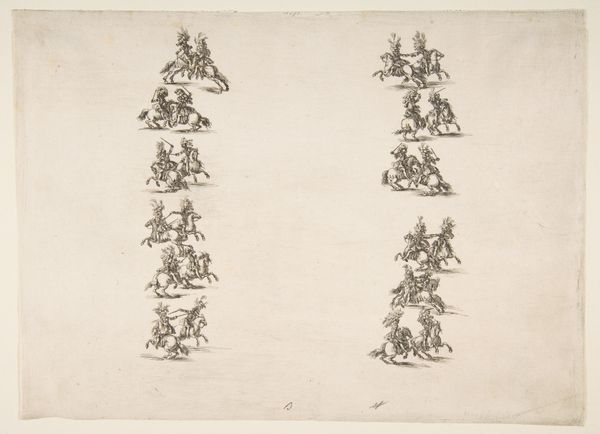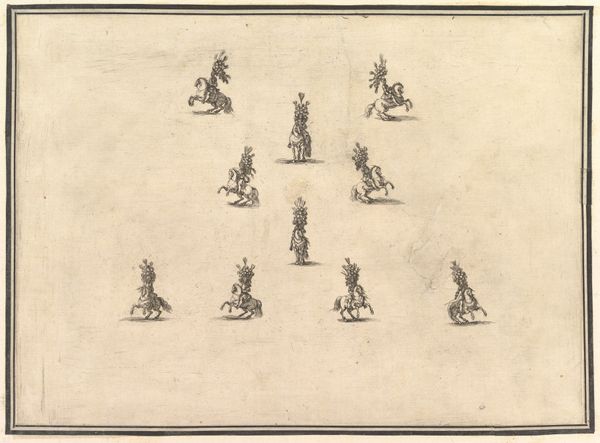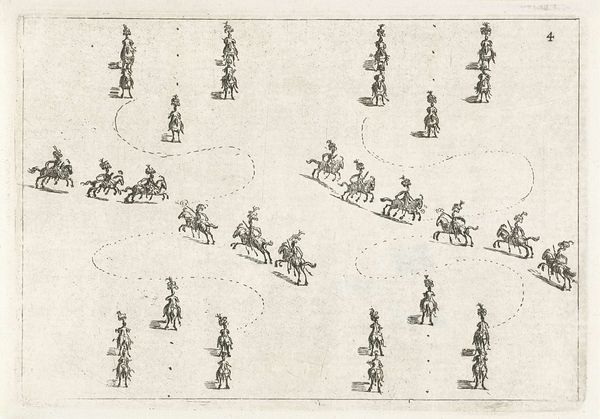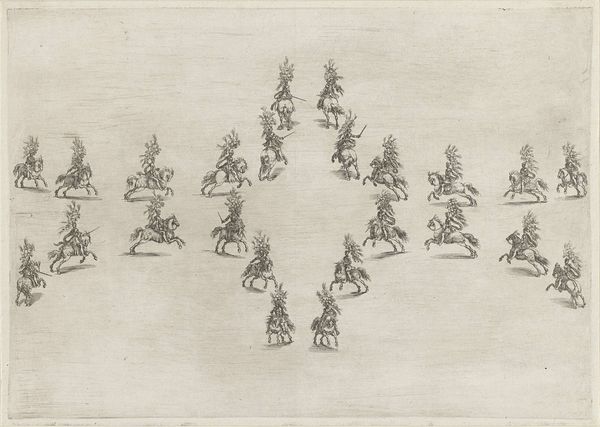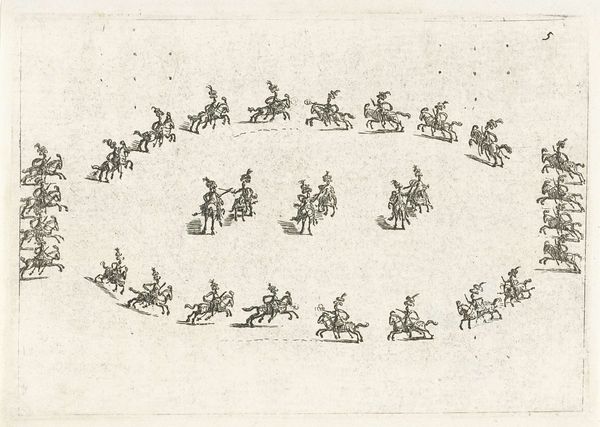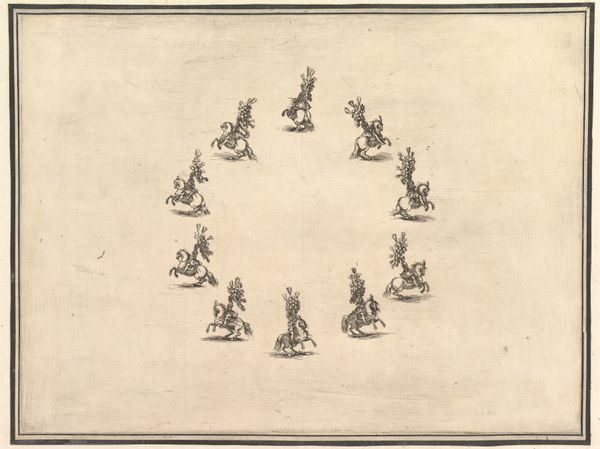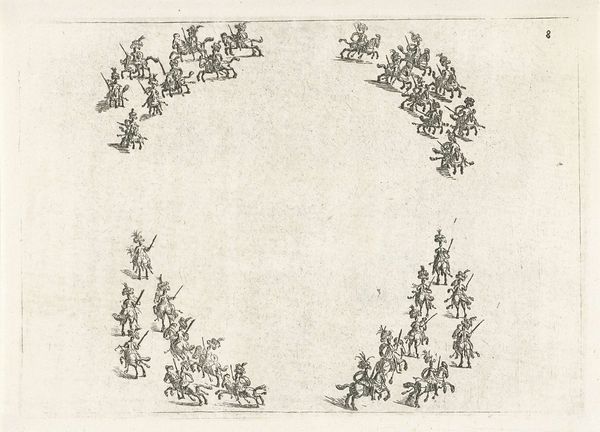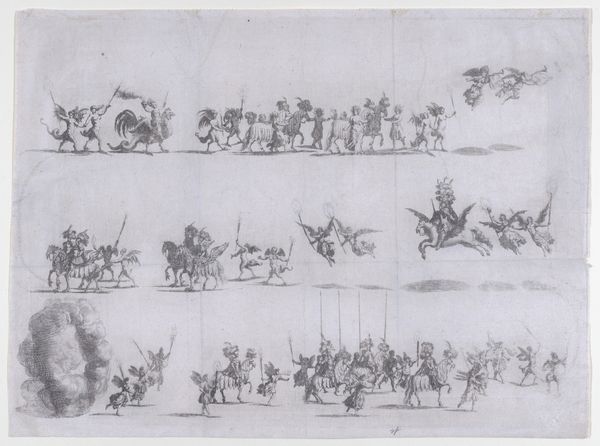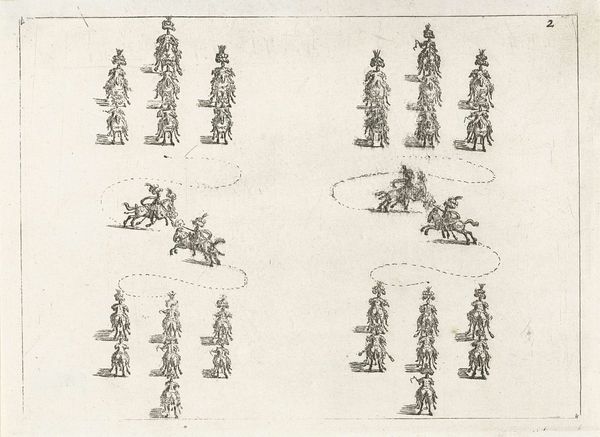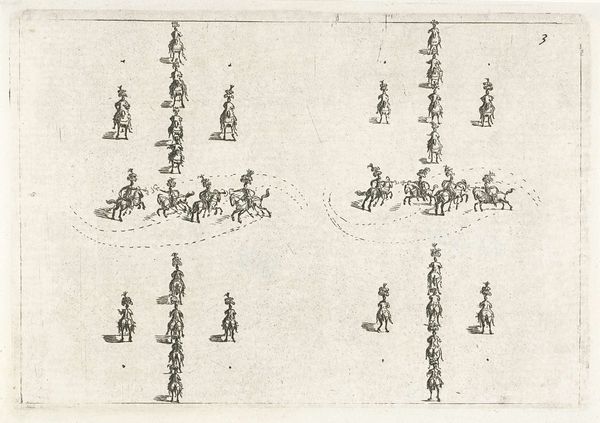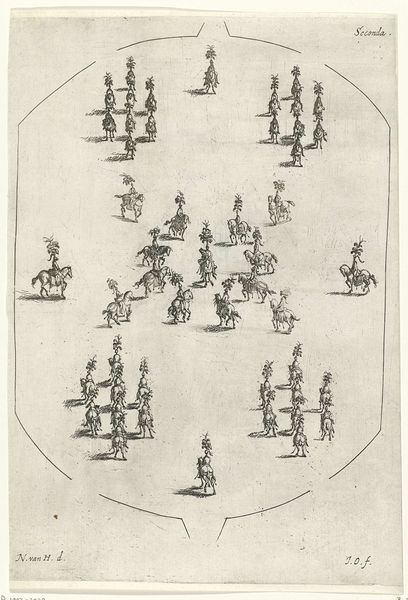
print, engraving
#
baroque
# print
#
figuration
#
line
#
history-painting
#
engraving
Dimensions: height 230 mm, width 324 mm
Copyright: Rijks Museum: Open Domain
Curator: This delicate print, created through engraving by Stefano della Bella in 1652, is titled "Sixteen Riders with Lances," now held at the Rijksmuseum. What catches your eye initially? Editor: Well, beyond the obvious sixteen riders, the sparseness strikes me. There's so much empty space around these figures, it's almost unnerving. A minimalist battlefield? Curator: Minimalist, perhaps unintentionally so. Considering the period, baroque tendencies favored complexity. Yet the linear, almost diagrammatic, approach lends itself to historical understanding of military pageantry of the period. Editor: Precisely, it's that sense of ordered display that speaks volumes about the culture it comes from. Note how each rider sports similar plumed helmets and carries a lance – are they a particular military unit? And why the repetitions? Is it meant to showcase a group of individuals or some symbolic regimentation of warfare? Curator: It evokes an emotional intensity in that very question. While the individual riders do appear mostly identical, such accoutrements symbolize the values they share: allegiance to their social world and the aesthetic significance associated with baroque-era spectacle. Consider their gestures as if performing some choreography, and note too that they're nearly floating rather than engaging any physical space! Editor: Interesting observation about floating. That detachment feeds into a sense of unrealism; an illustration, perhaps, more than an attempt to represent lived combat experience. Is this piece less about commemorating any event and more about lionizing those cultural values? Curator: I suspect both motivations are in play. The artist likely intended to represent martial virtues of this early period through idealized forms – but this did inevitably depend upon societal perception. How would his audience perceive them and their significance at that time? What feelings would viewers, say in 1652, bring as they interpret? Editor: Excellent point. Today, observing this at the Rijksmuseum, distanced by centuries, we might miss layers of encoded social significance, the immediate impressions an 17th-century viewer would've likely grasped immediately. Curator: Agreed, which highlights the role cultural artifacts play in sparking discussions that unveil history through diverse lenses! Editor: Indeed. And now I want to learn about Dutch martial pageantry and helmet plumes of the 17th century! Thanks for opening my eyes.
Comments
No comments
Be the first to comment and join the conversation on the ultimate creative platform.
